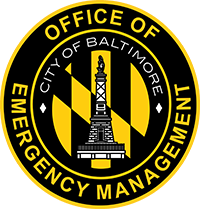

Baltimore is prone to flooding from a number of different sources. The city has approximately 52 miles of shoreline, which can rise dramatically during certain weather conditions. Additionally, the city lies within two major drainage basins—the Patapsco River Basin and Back River Basin. The Gwynns Falls drains the northwest and western portions of the city, and the Jones Falls drains the upper northwest and central portions of the city, both emptying into the Patapsco River. Herring Run drains the eastern part of the city, emptying into Back River in Baltimore County. During periods of heavy rainfall, these tributaries can be subject to dangerous riverine flooding.
 The Federal Emergency Management Agency (FEMA) released a 90-second animation that illustrates what you should do before, during, and after a flood. The video contains helpful information to help you weather the storm.
The Federal Emergency Management Agency (FEMA) released a 90-second animation that illustrates what you should do before, during, and after a flood. The video contains helpful information to help you weather the storm.
FEMA also maintains www.FloodSmart.gov, which can help you learn more about flood insurance, flood maps, and preparedness.
Hurricane watch—Hurricane conditions are possible within the next 48 hrs.
Steps to take:
Hurricane warning—Hurricane conditions are expected within 36 hrs.
Steps to take:
For more information about hurricanes and tropical storms, or for up-to-date watch and warning information, visit the National Hurricane Center.